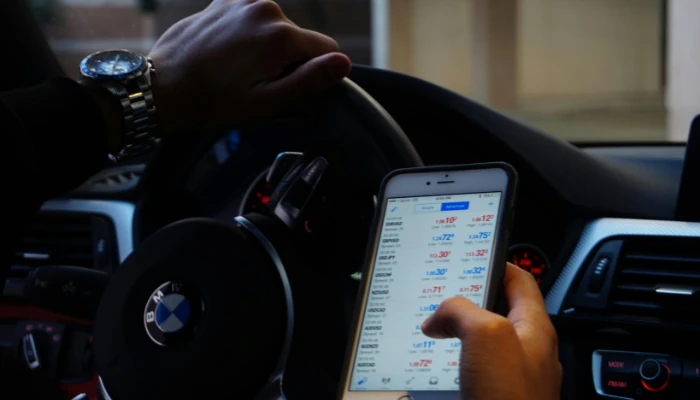Mobile technology has really revolutionised the world of forex by enabling users to make trades, view market information and access analysis tools with unparalleled ease of use. The development of trading platforms is an aspect of broader fintech trends and shifts in investor sentiment.
Forex trading has really undergone a revolutionary shift in recent times, transitioning from professional brokers’ desktop terminals to smartphones used by mass users. The shift was driven by growing smartphone penetration, heightened need for remote access and advancements in smartphone technology. Traders today crave full-scale functionality in the palms of their hands, irrespective of location or time zone.
This shift has really also reshaped the way markets operate. Under the old paradigm, intraday activity revolved around the standard 9-to-5 working days of banking centres. Today, users can participate in the 24-hour foreign exchange market at any time, which adds volatility while reducing response windows. In this mobile-first environment, the application has become the go-to tool for in-the-moment execution, technical analysis and aggregating news streams.
Whereby in the past traders had to watch multiple screens and use human brokers to execute trades, today’s apps replicate (and in some instances amplify) those capabilities with AI-powered signals, alerting systems that can be tailored to individual preferences and risk-reduction tools. It’s not just an expansion of desktop capabilities but an entire redesign of the way traders behave.
Contents
Speed, Accuracy and Real-Time Data
Among the most critical advances in a trading app is the improvement in execution speed. Latency has historically been an issue with mobile trading, but it has been minimised to milliseconds with advancements in server-side processing and low-latency API connectivity. It is essential in the forex market as small changes in price can be highly profitable or costly.
Additionally, contemporary apps offer real-time data streaming, enabling traders to view live charts, economic calendars and sentiment indicators without delay. Today’s users can respond instantly to central bank releases of information, geopolitical events and financial data releases.
One-tap trading and smart order routing are features that enable quick action without delay or human error. For instance, some of these platforms incorporate dynamic systems of charting where technical indicators, such as RSI, MACD or Bollinger Bands, update in real time as one scrolls or pinches to zoom in. This type of response was previously reserved for high-end trading desks but is now common in most available solutions.
Personalisation and User-Centric Design
Another significant innovation is in the user interface and personalisation. Because of its expanded demographic of users, which now includes retail investors and Part-time Traders, the usability of the app has become an utmost concern. The interface must strike a balance between functionality and simplicity, allowing both new users and seasoned ones to use it without confusion or disarray.
Custom dashboards are standard fare now. Traders can personalise their workspace by deciding which instruments, assets or alerts will be at the forefront. A pip calculator, Fibonacci retracement overlay or a watchlist of specific currency pairs may be it – users can tailor the experience to fit their trading style. Personalisation does extend beyond graphical layout.
Machine learning and behavioural tracking are increasingly used to analyse individual investment patterns and make personalised recommendations. This is controversial in terms of data privacy, but it can make decision-making more informed for those without formal training or institutional backing.
Risk Management and Learning Tools
Mobile trading has opened the forex market to everyone, but in the process, it has created new risks, especially for novice users. In response, the app’s developers incorporated stronger risk management features to ensure sustainable trading behaviours. Stop-loss and take-profit features are more visible and easier to initiate, while margin calculators and size guidelines are integrated directly into trade entry pages.
Reminders and alerts facilitate risk restrictions, encouraging users to adhere to preprogrammed strategies rather than making impulsive decisions based on emotion. Learning tools have also entered the domain of modern-day trading apps. Rather than pointing users to external material, many websites now incorporate built-in learning modules—such as videos, quizzes and interactive tutorials—to enhance users’ level of financial sophistication.
Some of them even mimic actual trades based on historical data, providing users with a risk-free environment in which to practice before investing capital. The innovations serve two purposes: they make the market open to new entrants while providing experienced traders with greater visibility of their performance through analytics dashboards and reviews of their trade history.
Regulatory Compliance and Security Measures
With forex trading becoming increasingly mobile and borderless, regulatory supervision has fallen behind. However, most of the trading apps are actively integrating compliance and safety features to safeguard users while ensuring market integrity. Biometric verification, end-to-end encryption methods and two-factor verification are now commonplace, satisfying the increased need for protection from mobile break-ins.
Apps also contain explicit data use policies, privacy statements and license details, particularly in areas with very differing regulatory standards. In-app Know Your Customer (KYC) verification is commonly used to verify identity, monitor for suspicious activity and prevent money laundering. Fraud login attempts that are unusual or high-risk can be detected using real-time fraud detection algorithms combined with geofence technology.
Certain jurisdictions now require trading applications to make risk disclosures available to clients or limit leverage ratios for retail clients. This adds some friction to the experience but ensures greater transparency, as well as protection for traders against devastating losses.











